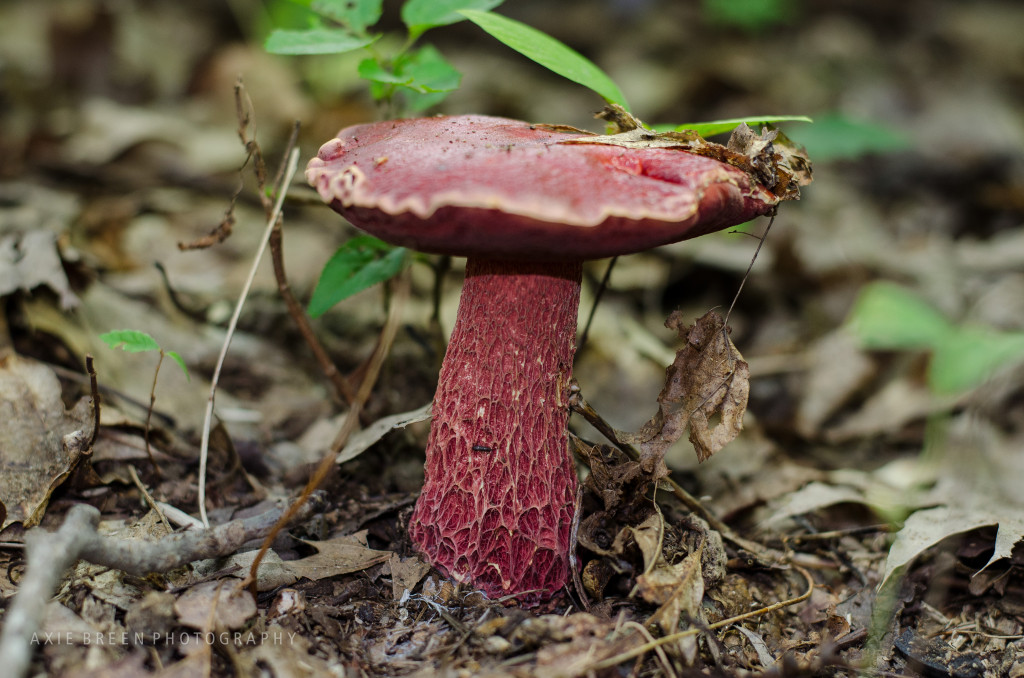 A very distinctive mushroom because the whole thing is dark red, it’s pretty big, and it has this internal-organ looking stem. In Mexico, the common name is panza agria, meaning “sour belly”.
A very distinctive mushroom because the whole thing is dark red, it’s pretty big, and it has this internal-organ looking stem. In Mexico, the common name is panza agria, meaning “sour belly”.
Frost’s Bolete, Apple Bolete (Exsudoporus frostii)

This year, we had a double puffball event in our yard. When I noticed them they were smaller than baseballs and then were visibly larger every day. Finally B picked one and ate it, after a brief “Alas, poor Yorick” moment, and then there was one. Last photo with a slice removed, to show its solid interior, with the slice like a piece of soft cheese or a delicate wedge of memoryfoam pillow.
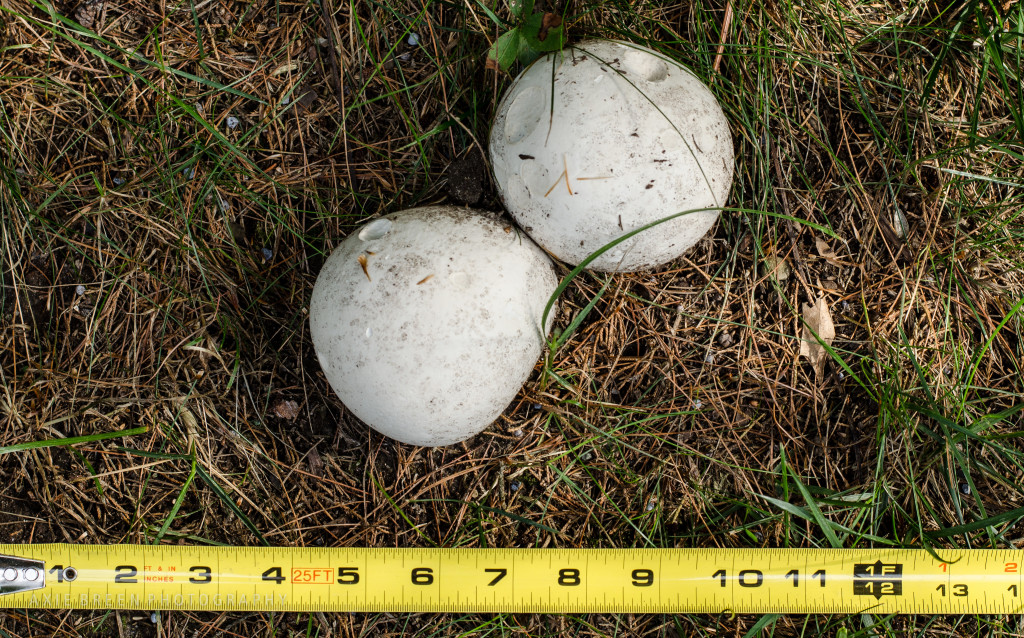
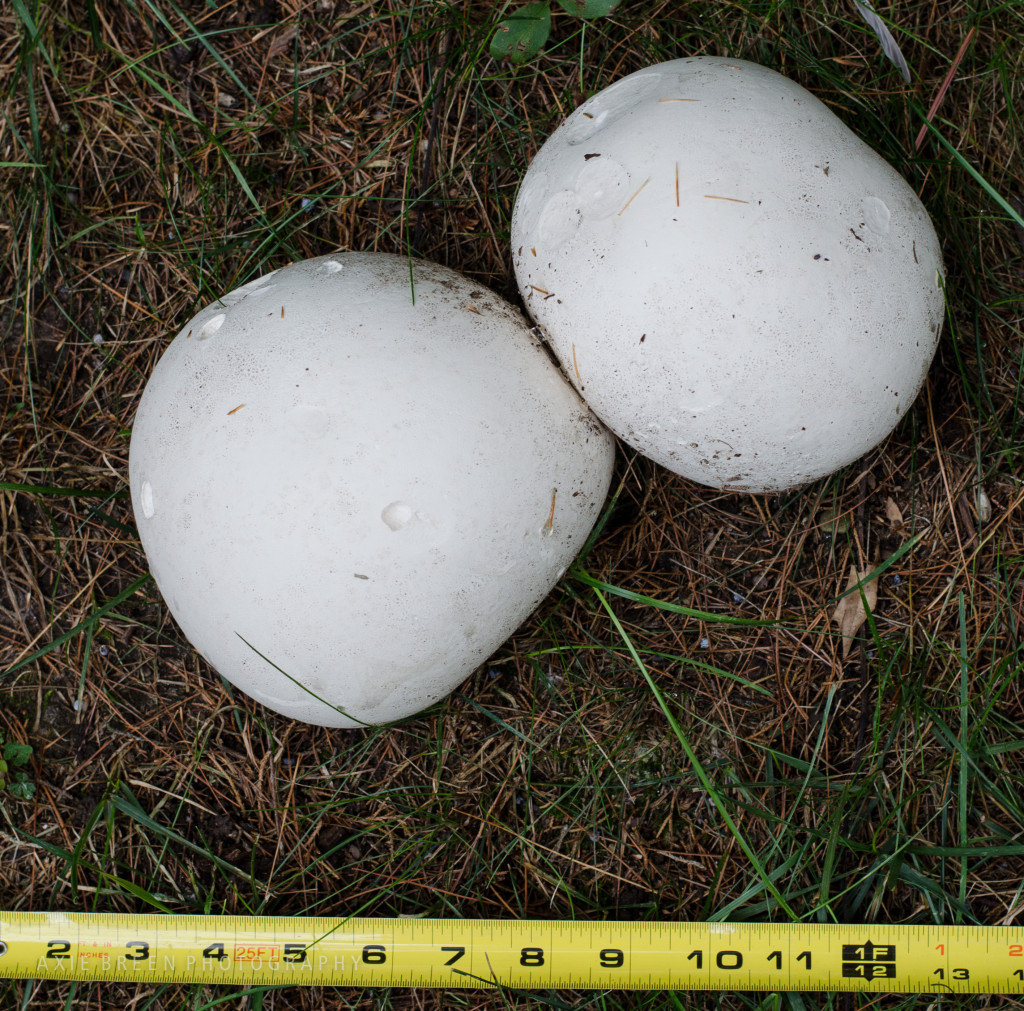
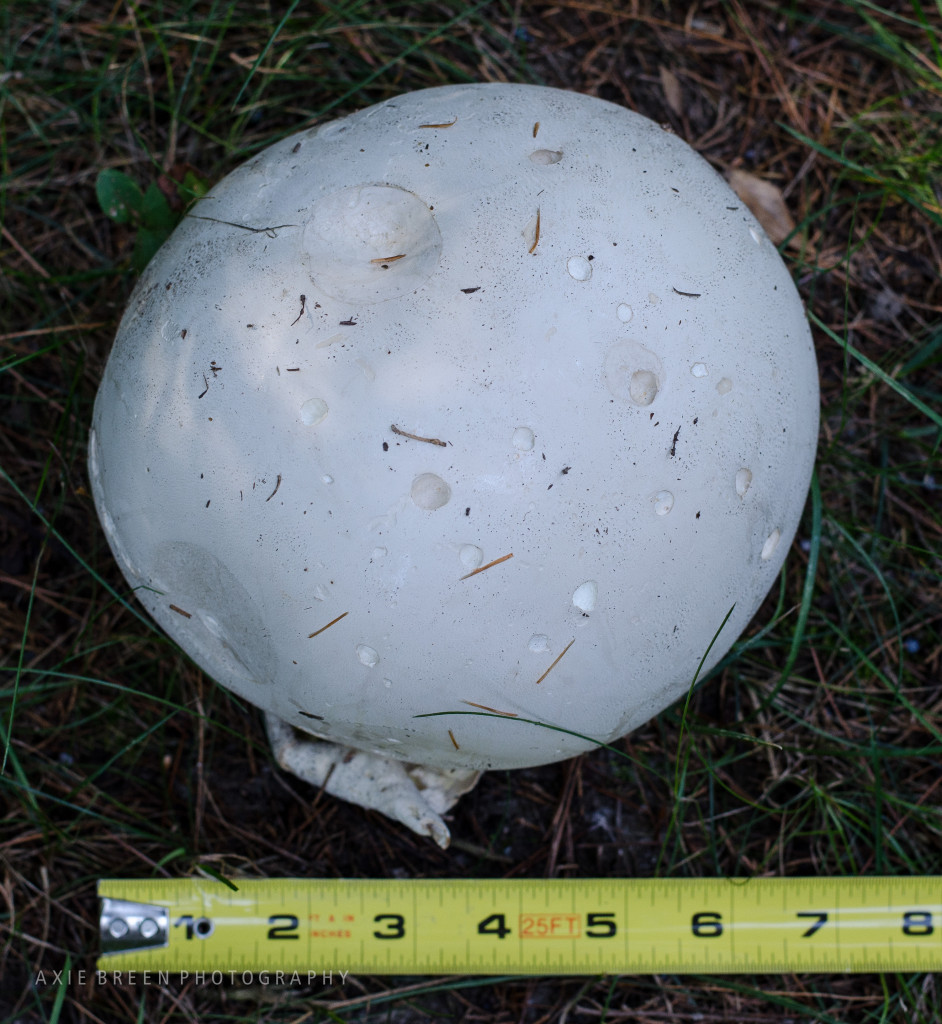
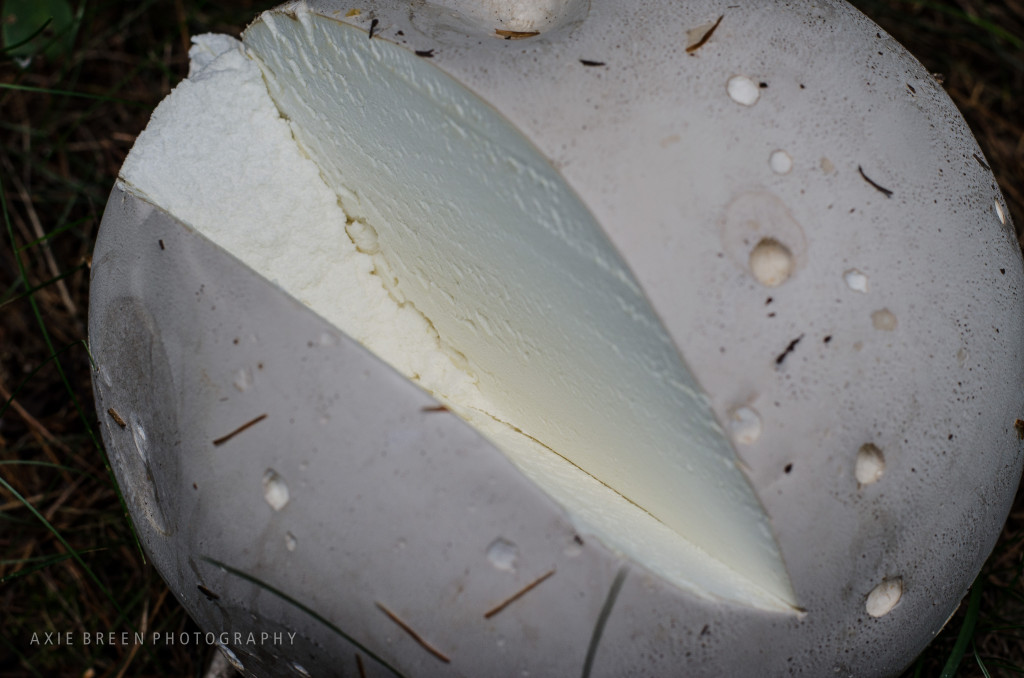 Found in temperate regions worldwide.
Found in temperate regions worldwide.
Giant Puffball (Calvatia gigantea)
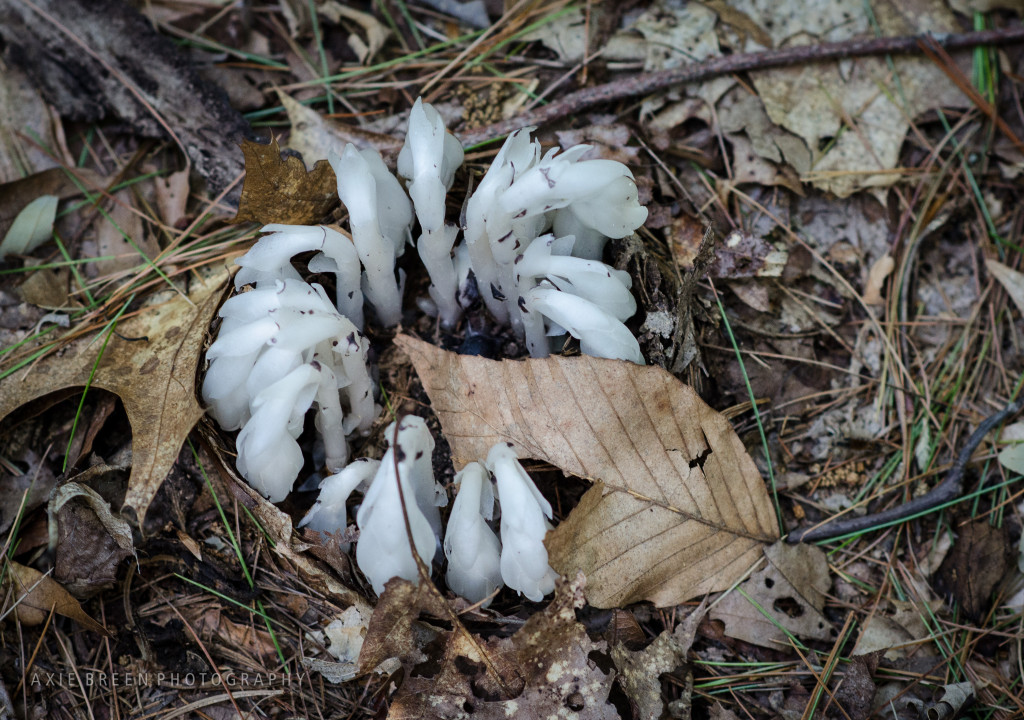 Indian Pipe is not a fungus. It’s a flowering plant related to Rhododendrons and blueberries, which sounds very improbable. This plant does not have chlorophyll to make its nutrients, so it lives parasitically by tapping into fungi that live in the soil (and are obtaining THEIR nutrients from tree roots, usually beech and pines). So they can grow in the dark because they don’t use the sun. And, they can’t be transplanted, because they need their connection to the underground fungus, which needs its tree roots. There is a Cherokee story that the Great Spirit was displeased with a council of elders who had quarreled with each other, and changed the old chiefs, with their bowed heads, into these flowers to remind the people to make peace. Native.
Indian Pipe is not a fungus. It’s a flowering plant related to Rhododendrons and blueberries, which sounds very improbable. This plant does not have chlorophyll to make its nutrients, so it lives parasitically by tapping into fungi that live in the soil (and are obtaining THEIR nutrients from tree roots, usually beech and pines). So they can grow in the dark because they don’t use the sun. And, they can’t be transplanted, because they need their connection to the underground fungus, which needs its tree roots. There is a Cherokee story that the Great Spirit was displeased with a council of elders who had quarreled with each other, and changed the old chiefs, with their bowed heads, into these flowers to remind the people to make peace. Native.
Indian Pipe, Ghost Plant, Corpse Plant (Monotropa uniflora)
The bonus picture, totally unrelated: B’s boss had been given some sweets by a friend who had just been in Paris. He was having trouble giving them away at the office! B brought them home to me. First I saw the label: Ladurée Paris! Only the world’s most famous maker of macarons! And that’s what they are!
 Okay, I know this is off topic. But when I went through the process of buying a used car, most of the relevant advice on the internet was general, from big corporate sites — not much in the line of personal experience. So I want to add what I learned to the google zone.
Okay, I know this is off topic. But when I went through the process of buying a used car, most of the relevant advice on the internet was general, from big corporate sites — not much in the line of personal experience. So I want to add what I learned to the google zone.
So first you figure out the kind of car you want and the budget you’re allowing to buy it. Then look around online to see who has some in stock. Then zero in:
1. Identify the car you want. Look at Edmunds, Kelley Blue Book online to get a sense of market value. Look at Carfax for deets on that particular car.
2. Call the dealer to check availability and make an appointment to drive it. Check the asking price and what it covers: If the car is advertised as Certified, does the listed price cover certification or is it actually extra? (Get alert to any bait-and-switch at the outset.) Is this a negotiable price or is this a no-negotiation shop?
3. Test drive. Don’t be too positive. Reserve judgment and keep in mind any flaws.
4. Negotiate. I read that an advertised price includes a “20% gross margin,” so to open your negotiation at 15% below… and come up to maybe 10% below, or what your research indicates is a reasonable price for that car. I’m not sure about these percentages — with a new car, you can find the wholesale price, but with a used car, it’s not clear cut.
Don’t take it personally if they act insulted at your offer. You have to pretend you do financial negotiations all the time, just like they do.
Do NOT reveal what you’re really willing to pay, because they will immediately clamp onto that figure and start working upwards from there. (When I revealed that number, I felt the balance of power shift.)
Work out the car price deal first before considering the value of any trade-in, because the figures get fast and confusing when they mix them together, plus there is lots of opportunity for them to discuss all the negatives of your trade-in.
Be ready to walk if you are not coming to an agreement you like, or if you feel like they’re trying to mess with you. Or ask for a few minutes alone (with your calculator) to recover from their patter, look at the figures and formulate your plan.
Also, this can take a long time, what with them consulting with their manager, etc., so be ready for that too.
You might be thinking to use CarMax or another no-negotiation car seller to avoid all that hassle, but if you are willing to do the homework and negotiate, I do think you will end up with a better deal than at a CarMax type place. (I know I did, comparing the similar cars and prices at those dealers with what I got.)
It’s nice to have someone go with you, if possible. In my case, for awhile they kept trying to deal with my husband, but I was actually steering this particular purchase and they eventually figured that out (as B got out a novel to make it clear he really was not the negotiator) and they had to talk to me. We inadvertently had kind of a good cop, bad cop thing going on, because he was more ready to buy and I was seriously ready to walk, and I do think that saved us some money.
Good luck!
Okay, we can have a bonus photo from nature: lettuce at Powisett Farm, Dover, MA.
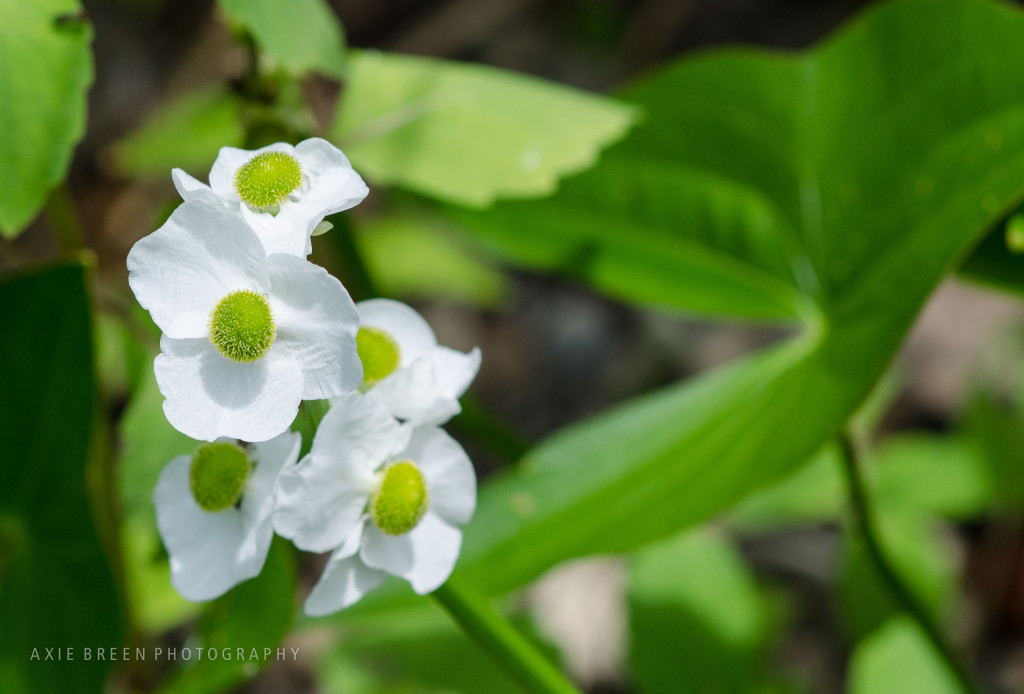 Another marsh plant seen at Lake Waban in Wellesley, MA. Grows with its feet in water, can be one to three feet tall with big arrow-shaped leaves. Very attractive to insects because it has 25-40 stamen and can hold loads of pollen. Ducks feed on the tubers and seeds. Muskrats eat them too. Native. Water Plantain family.
Another marsh plant seen at Lake Waban in Wellesley, MA. Grows with its feet in water, can be one to three feet tall with big arrow-shaped leaves. Very attractive to insects because it has 25-40 stamen and can hold loads of pollen. Ducks feed on the tubers and seeds. Muskrats eat them too. Native. Water Plantain family.
Common Arrowhead, Duck Potato (Sagittaria latifolia)
This plant is slightly furry with purple leaves which appear fused together around the stem. It grows in low wet areas. (I shot this from the boardwalk at Lake Waban.) It’s in the sunflower family! Native people used it to break fevers by heavy sweating, and it was a very commonly used medicinal plant in the 19th century for all kinds of ailments. The latin name perfoliatum comes from the way the stem appears to perforate the leaves. Native.
Common Boneset, Thoroughwort, Agueweed, Feverwort (Eupatorium perfoliatum)
 I photographed this lily, but look closely at who else is in this shot!
I photographed this lily, but look closely at who else is in this shot!
That’s right, a little frog has its nose stuck up there. And when we started looking for them, we saw loads of little frogs, still wearing their tadpole tails, enjoying their new ability to breath air, sunning themselves on the lily pads. (I can’t help but think, heron snacks.) I think these might be juvenile bullfrogs. There was a bullfrog at this pond with a call like a great foghorn.
Water Lily (Nymphaea sp.)
Bonus photo: Lucy investigating the beaver lodge, which is about twice as big as last year.
I wondered how this heron nest could possibly weather the severe winter we had, but I was glad to see it still there and occupied this spring. I believe these are the young ones, looking a bit like bowling pins til they turned their heads…
Herons lay 2-6 eggs in a clutch, in March and April. The eggs incubate about a month. Then they fledge when they’re about two months old. They still come back to visit for a few weeks.
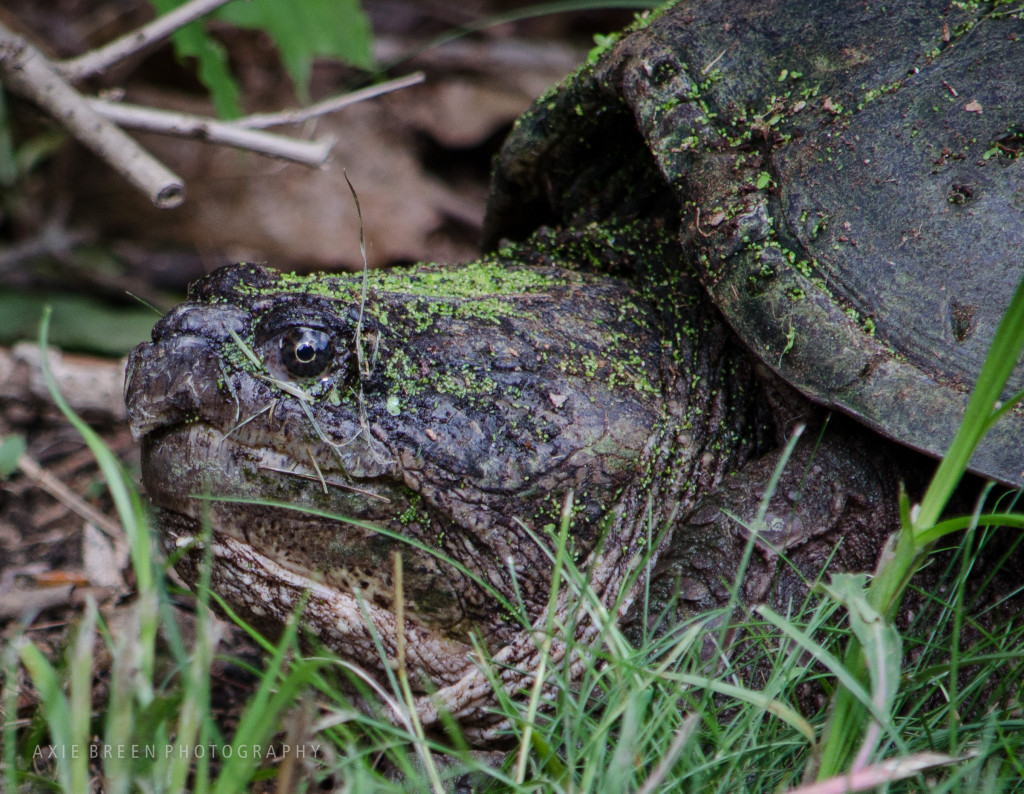 I was sitting at my desk when my attention was drawn by sudden movement outside. This turtle had just walked through the yard and when it came to the edge, where there’s a wall and a two-foot drop, it just took a
I was sitting at my desk when my attention was drawn by sudden movement outside. This turtle had just walked through the yard and when it came to the edge, where there’s a wall and a two-foot drop, it just took a flying leap tumble down to the driveway. Turtle parkour! At first I thought it might be injured, but it straightened its tunic and kept going. They’re surprisingly leggy and fast when in motion. Reminded me of this:
Presumably it was on an egg-laying mission.